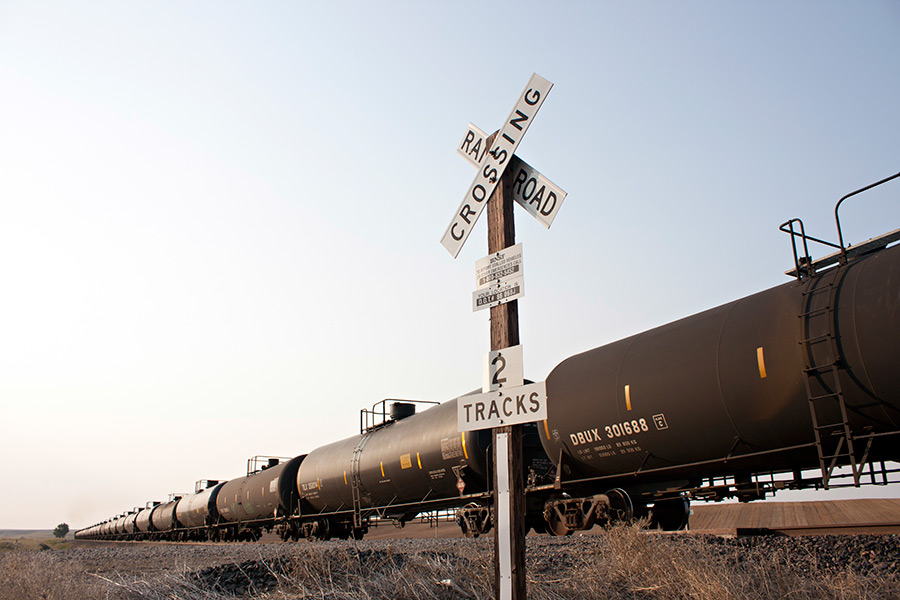Crude oil has become big business for railroads in North America in recent years. America’s largest railroads went from moving just 9,500 carloads of oil in 2008 to well over 400,000 carloads in 2013. And while that statistic might suggest railroads are concerned about dropping oil prices, rail analysts say it’s actually good for the industry.
Independent analyst Anthony Hatch said while crude by rail has grown by leaps and bounds in recent years – especially in the Bakken oil fields – it still makes up only a fraction of the cargo railroads move. According to the Association of American Railroads, during the first nine months of 2014, crude oil accounted for just 1.6 percent of carloads moved by Class 1 railroads, which include the largest rail companies in America.
Hatch said the number of cars moving crude oil is minuscule when compared to the number of cars moving containers full of consumer goods, categorized by AAR as intermodal. And with prices dropping at the gas pumps, Americans will have more money to spend, which means the number of containers full of goods will only increase.
“I think the impacts on the railroad business will be positive,” Hatch said. “I don’t think (dropping oil prices) will hurt them.”
Similar to consumers who now have a little extra spending money in their pockets because of prices at the pump, so too will railroads, which use a massive amount of fuel every year for locomotives and other vehicles.
“It seems like whatever loss in business they see will be offset by the drop in fuel costs,” Edward Jones analyst Logan Purk recently told the Associated Press.
Industry analysts and observers also note that just because the price is dropping does not necessarily mean oil production will come to a grinding halt. New oil development, however, could slow down in the coming year, which is one area analysts say could impact railroads because they won’t be moving equipment and supplies for new oil wells.
“Domestic production will still grow but the rate of growth will drop,” said Thomas O’Connor, a principal of ICF International, a Virginia-based energy-consulting firm. “Crude by rail could slow down, but not a lot.”
That likely means that the number of oil trains rolling out of North Dakota – and through the Flathead Valley and along Glacier National Park’s southern boundary – will probably remain steady. According to information from BNSF Railway, and released by the state of Montana, last fall there were anywhere from 14 to 18 oil trains traveling through the area every week.
The movement of crude by rail made headlines in 2013 and 2014 after a series of explosive derailments in the United States and Canada, most notably in Quebec, where an oil train derailed and exploded, leveling 30 buildings and killing 47 people.
